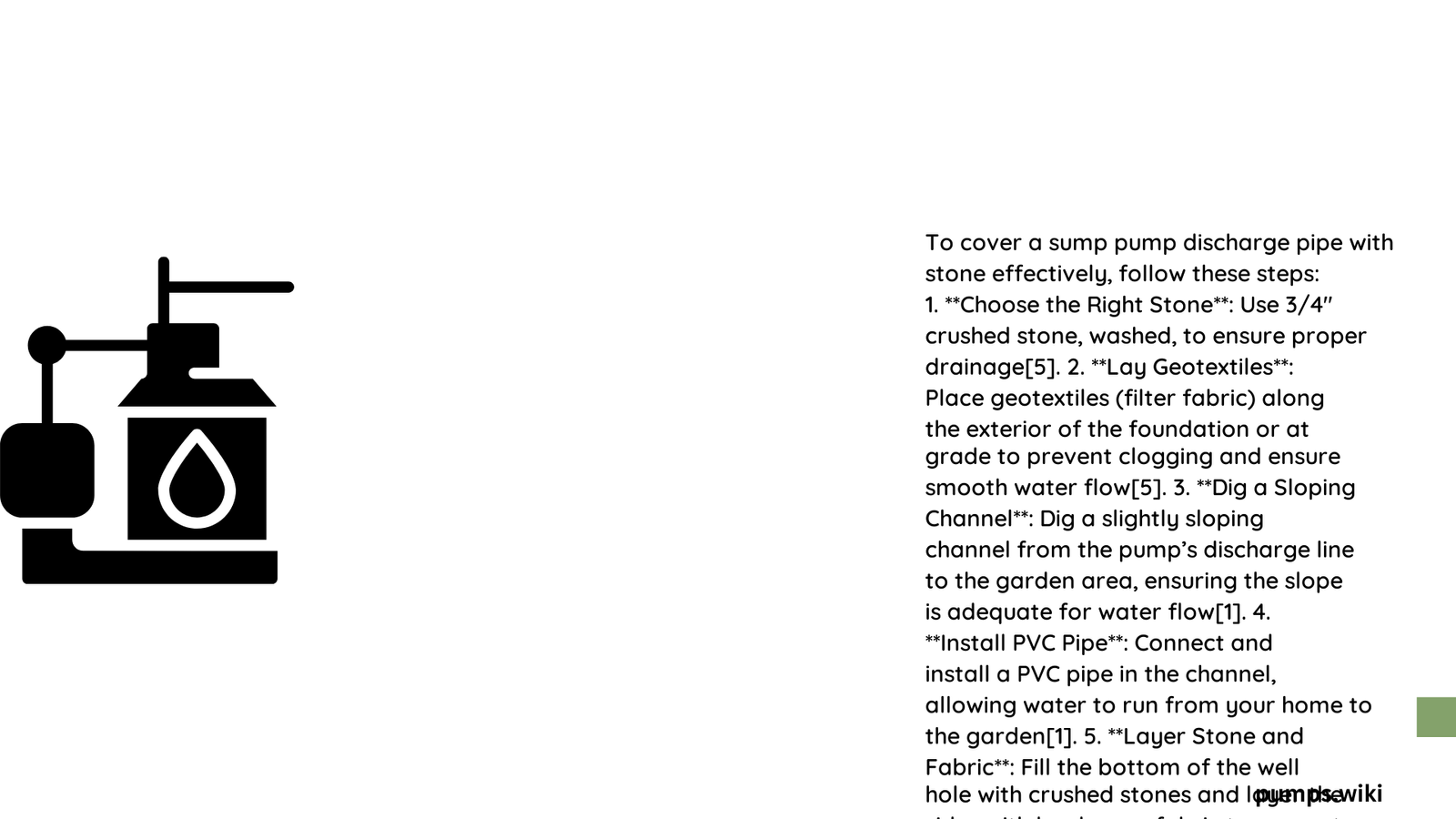Covering a sump pump discharge pipe with stone is a critical home maintenance technique that ensures efficient water drainage, prevents erosion, and protects your property’s foundation. Homeowners can significantly improve their drainage system’s performance by strategically selecting and installing the right type of stone around their sump pump discharge pipe, creating a robust solution for water management and landscape protection.
Why Cover Sump Pump Discharge Pipe with Stone?
Water management around sump pump discharge pipes requires strategic planning and precise implementation. The primary goals of covering the discharge pipe with stone include:
- Preventing soil erosion
- Facilitating optimal water drainage
- Protecting the surrounding landscape
- Reducing potential water damage risks
What Types of Stone Work Best for Sump Pump Discharge?

Stone Selection Criteria
| Stone Type | Size Range | Drainage Efficiency | Recommended Usage |
|---|---|---|---|
| Washed Gravel | ¾ – 1 inch | High | Primary Recommendation |
| River Rock | 1 – 2 inches | Moderate | Secondary Option |
| Crushed Stone | ½ – 1 inch | Good | Alternative Choice |
Key Characteristics of Ideal Stone
- Clean and Washed: Ensures no fine particles that could block drainage
- Uniform Size: Promotes consistent water flow
- Angular Edges: Provides better interlocking and stability
How to Prepare for Stone Installation?
Essential Tools and Materials
- Shovel or mechanical digger
- Clean, washed gravel (¾ – 1 inch)
- Leveling tool
- Protective gloves
- Safety glasses
- Measuring tape
What Are the Step-by-Step Installation Techniques?
Detailed Installation Process
- Site Preparation
- Clear the area around the discharge pipe
- Remove any existing debris or vegetation
-
Ensure proper ground slope for water runoff
-
Excavation
- Dig a trench approximately 6-8 inches deep
- Create a slight gradient away from the foundation
-
Ensure minimum 2% slope for effective drainage
-
Gravel Bed Creation
- Spread initial 2-3 inch layer of clean gravel
- Compact the base layer
-
Ensure level and stable foundation
-
Pipe Placement
- Position discharge pipe on prepared gravel bed
- Verify proper alignment and gradient
-
Secure pipe if necessary
-
Stone Coverage
- Gradually fill around pipe with selected stone
- Maintain consistent stone size
- Leave adequate space for water flow
What Potential Challenges Should You Anticipate?
Common Installation Obstacles
- Soil composition variations
- Drainage complexity
- Local climate considerations
- Potential underground utility interference
How Much Does Stone Coverage Cost?
Estimated Expense Breakdown
- Gravel Cost: $30 – $50 per cubic yard
- Labor (DIY): Minimal
- Professional Installation: $200 – $500
- Additional Materials: $50 – $100
Pro Tips for Long-Term Maintenance
- Inspect stone coverage annually
- Remove any accumulated debris
- Check for potential erosion signs
- Ensure consistent water flow
Potential Risks of Improper Installation
- Foundation water damage
- Soil erosion
- Reduced pump efficiency
- Potential basement flooding
Conclusion
Covering a sump pump discharge pipe with stone requires careful planning, precise execution, and ongoing maintenance. By following these expert guidelines, homeowners can create an effective water management system that protects their property and ensures long-term drainage efficiency.
